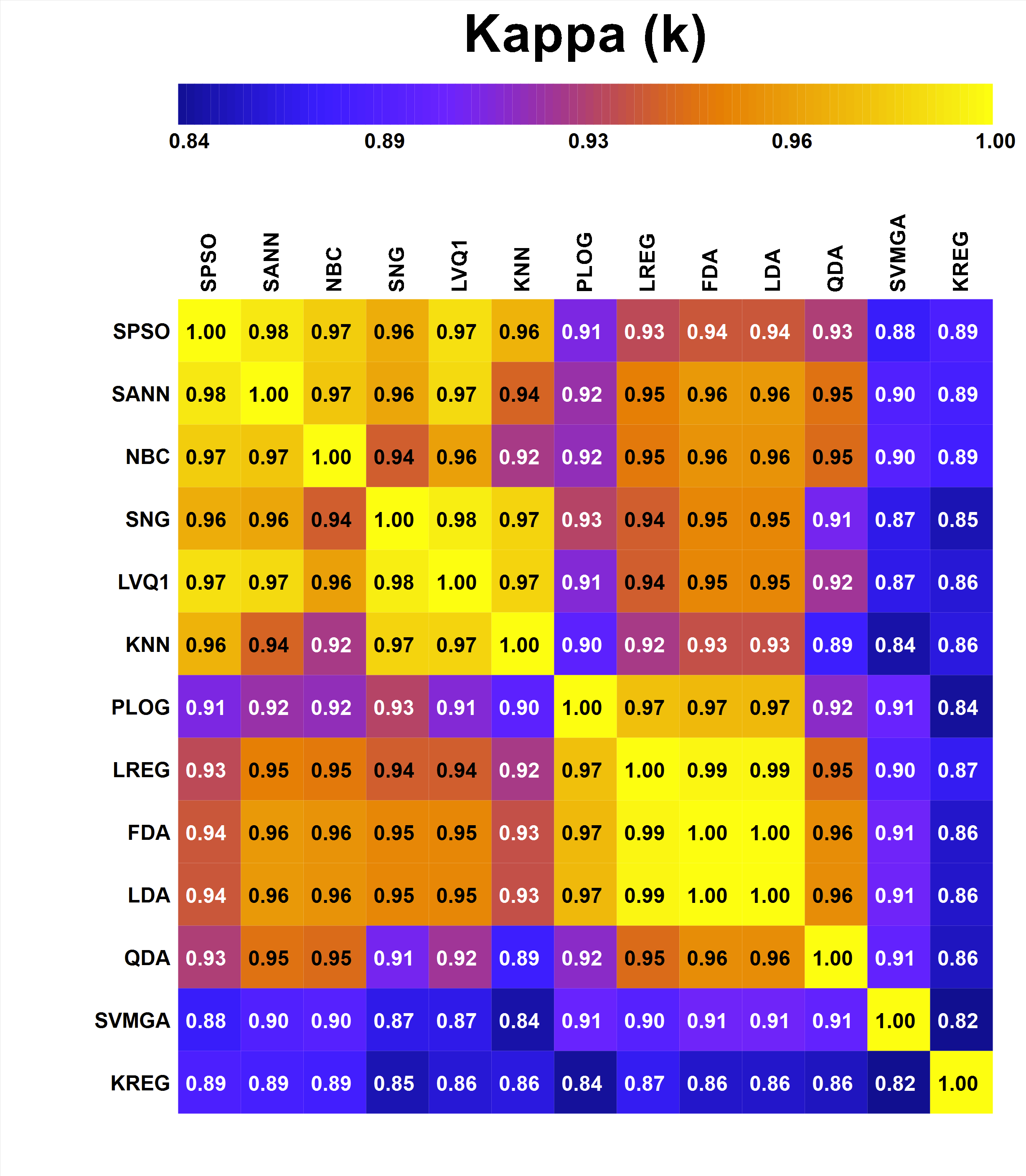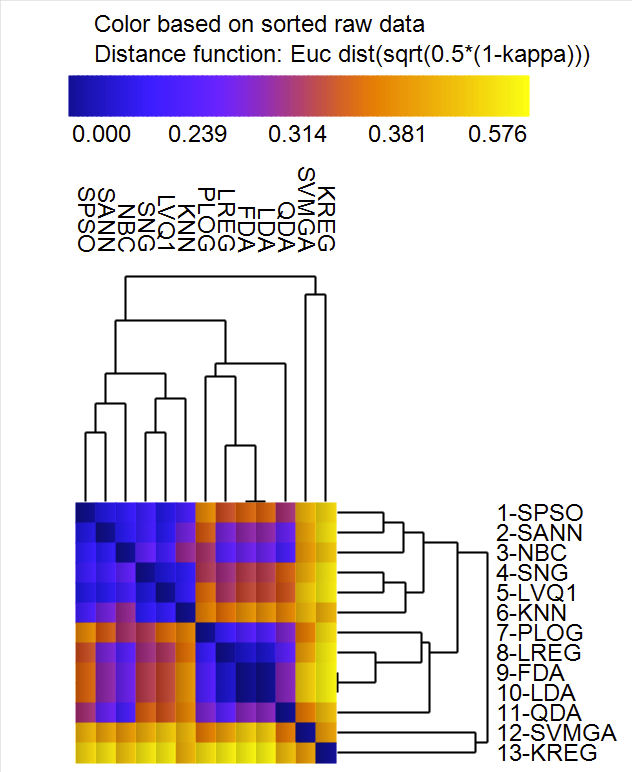The eigenvalues would really only reveal how many classes (single classifier) or how many classifiers are correlated with one another (multiple classifiers). But if you look at the quasi-diagonalized Kappa matrix for all possible pairs of classifiers applied to the 3-class Wine dataset below:

...you can then perform hierarchical cluster analysis using a modified form of Euclidean distance to see which classifiers cluster with one another:

Note, this Kappa matrix is a $13 \times 13$, so when looking at the clustering, I notice three large groups of classifiers which are sizes 6, 5, and 2, so I would expect the eigenvalues, $\lambda_j$, of a $p \times p$ correlation matrix (MCC) to perhaps show something similar to this. That is, you wouldn't likely have one large eigenvalue like 8 or 9, with the remaining in the other dimensions. Instead, based on the clustering, I would guess eigenvalues of e.g. 5,4,1 which gives a sum of 10 for the first 3 components, and then the remaining 10 eigenvalues equal to <1 each so that they sum to 10. Altogether, the 13 eigenvalues would sum to 13, since it can be shown that $p=\sum_j \lambda_j$ when the correlation matrix is used for eigendecomposition.
I believe you can do more surgery (drilling down) regarding discovery on classifier behavior taking this approach instead of performing eigendecomposition.


